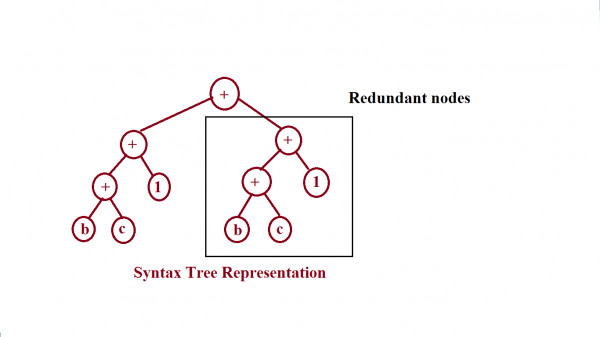the given c code can be written as:
a=b+c
e=a+1 =b+c+1
d=b+c
f=d+1 =b+c+1
g=e+f=(b+c+1)+(b+c+1)
Syntax tree of $g=(b+c+1)+(b+c+1)$ is:

Since DAG reused common sub-expression so redundant part is eliminated and join by single edges.

So number of nodes in dag are $6$ that are $(b,c,1,+,+,+)$ .